


1
2
3
4
5
6
7
8
9
10
11
12
13
14
15
16
17
18
19
20
21
22
23
24
25
26
27
28
29
30
31
32
33
34
35
36
37
38
39
40
41
42
43
44
45
46
47
48
49
50
51
52
53
54
55
56
57
58
59
60
61
62
63
64
65
66
67
68
69
70
71
72
73
74
75
76
77
78
79
80
81
82
83
84
85
86
87
88
89
90

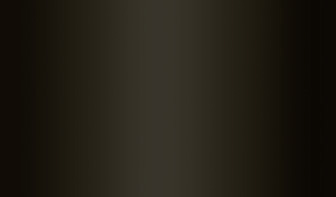

อาการฮีสทีเรียในสถานที่ทำการของอาณาจักรไรค์ หรือ the Reich Chancellery ได้พุ่งขึ้นสู่จุดสูงสุดในช่วงปลายของปี ๑๙๔๓ ซึ่งฮิตเลอร์ได้มีคำสั่งให้อพยพศิลปะวัตถุสิ่งของทั้งหมดทั้งในเยอรมนี และออสเตรียเพื่อที่จะรักษามันไว้ให้ปลอดภัย. เดือนกุมภาพันธ์ ค.ศ. ๑๙๔๔ ด้วยการปกคลุมของหิมะทั่วประเทศ ขบวนคอนวอยของรถบรรทุกที่บรรจุไว้ด้วยสินค้าอันล้ำค่าได้เริ่มเคลื่อนย้ายไปทางใต้ โดยมุ่งไปสู่ลินซ์ อย่างไรก็ตามทางตะวันออกของเมือง Salzburg พวกเขาเกิดเลิกล้มความคิดและเริ่มป่ายปีนด้วยความพยายามขึ้นไปสู่เขตภูเขาของพื้นที่สูงของเมืองดานูป (Danube). จุดหมายปลายทางของพวกเขาคือ "เหมืองเกลือในคริสตศตวรรษที่ ๑๔" ที่อยู่สูงเหนือหมู่บ้านอันงดงามแห่ง Alt Aussee. (คัดมาบางส่วนจากบทความ)


23-06-2552
(1738)
สารานุกรมประวัติศาสตร์ศิลป์ตะวันตก:
Hitler's
Museum
The
Linz Museum: พิพิธภัณฑ์และผลงานศิลปะที่สาบสูญ
รศ.สมเกียรติ ตั้งนโม: เรียบเรียง
โครงการก่อตั้งหลักสูตรทฤษฎีศิลปะและการวิจารณ์
บทความวิชาการนี้
สามารถ download ได้ในรูป word
งานเรียบเรียงชิ้นนี้นำมาจากต้นฉบับชื่อ
Hitler's Museum ซึ่งได้ให้ภาพความฝันของผู้นำนาซี และความคิดที่จะสร้างพิพิธภัณฑ์ศิลปะที่อาจเรียกได้ว่าเป็นสมิทธโซเนียนของนาซี
หรือพิพิธภัณฑ์ลูฟ
สำหรับอาณาจักรไรซ์ (the Nazis' Smithsonian Institution: a Louvre for the 1,000-Year
Reich)
บทความรวบรวมชิ้นนี้ได้รับการเก็บรักษาในรูปของสารานุกรมมหาวิทยาลัยเที่ยงคืน
เพื่อใช้ประโยชน์ทางการศึกษา งานวิจัย และการค้นคว้าทางวิชาการสำหรับนักศึกษา
นักวิจัย นักวิชาการ และประชาชนผู้สนใจความรู้ประวัติศาสตร์ไทยร่วมสมัย
งานเรียบเรียงชิ้นนี้ได้มีการแบ่งแยกหัวข้อเพื่อสะดวกต่อการค้นคว้าดังต่อไปนี้
- คณะกรรมการชุดพิเศษของฮิตเลอร์ (the Sonderauftraug)
- OSS กับภารกิจการค้นหาผลงานศิลปะที่ได้มาจากการยึดครองของนาซี
- เอกสารชิ้นสำคัญที่ยึดมาได้โดยกองทัพแดงโซเวียต
- OSS Art Looting Investigation Unit
- โซเวียตกับไล่ล่าผลงานศิลปะยุโรป
- Center for Historical Documentary Collections "Special Holdings"
unit
- ความพยายามครั้งสุดท้าย ด้วยรถถังและวัวต่างที่ DORA
(บทความนี้จัดอยู่ในหมวด
"ประวัติศาสตร์ศิลป์ สงครามโลกครั้งที่สอง")
สนใจส่งบทความเผยแพร่ ติดต่อมหาวิทยาลัยเที่ยงคืน:
midnightuniv(at)gmail.com
บทความเพื่อประโยชน์ทางการศึกษา
ข้อความที่ปรากฏบนเว็บเพจนี้ ได้รักษาเนื้อความตามต้นฉบับเดิมมากที่สุด
เพื่อนำเสนอเนื้อหาตามที่ผู้เขียนต้องการสื่อ กองบรรณาธิการเพียงตรวจสอบตัวสะกด
และปรับปรุงบางส่วนเพื่อความเหมาะสมสำหรับการเผยแพร่ รวมทั้งได้เว้นวรรค
ย่อหน้าใหม่ และจัดทำหัวข้อเพิ่มเติมสำหรับการค้นคว้าทางวิชาการ
บทความทุกชิ้นที่เผยแพร่บนเว็บไซต์แห่งนี้ ยินดีสละลิขสิทธิ์เพื่อมอบเป็นสมบัติ
ทางวิชาการแก่สังคมไทยและผู้ใช้ภาษาไทยทั่วโลก ภายใต้เงื่อนไข้ลิขซ้าย (copyleft)
บทความมหาวิทยาลัยเที่ยงคืน ลำดับที่ ๑๗๓๗
เผยแพร่บนเว็บไซต์นี้ครั้งแรกเมื่อวันที่ ๒๓ มิถุนายน
๒๕๕๒
(บทความทั้งหมดยาวประมาณ ๑๔.๕ หน้ากระดาษ A4 โดยไม่มีภาพประกอบ)
++++++++++++++++++++++++++++++++++++++++++++++++++++++++++++++++++++++++++++English Standard Version
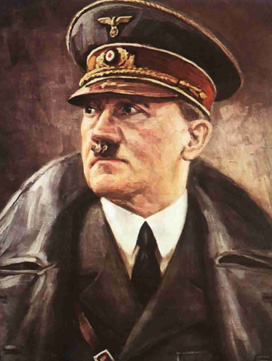
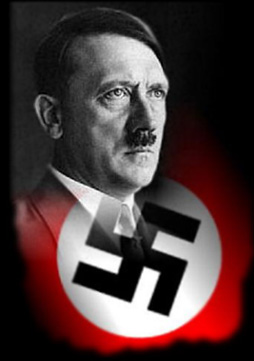
สารานุกรมประวัติศาสตร์ศิลป์ตะวันตก:
Hitler's
Museum
The
Linz Museum: พิพิธภัณฑ์และผลงานศิลปะที่สาบสูญ
รศ.สมเกียรติ ตั้งนโม: เรียบเรียง
โครงการก่อตั้งหลักสูตรทฤษฎีศิลปะและการวิจารณ์
บทความวิชาการนี้
สามารถ download ได้ในรูป word
ความนำ
The Linz Museum: พิพิธภัณฑ์ลินซ์ ถูกคิดขึ้นมาโดยอด๊อล์ฟ ฮิตเลอร์ ได้รับการออกแบบโดยสถาปนิกอัลเบิร์ต
สเปียร โดยได้รับเงินสนับสนุนและการบริหารงานโดยมาร์ติน บอร์มานน์ โครงการนี้เป็นที่อิจฉาตาร้อนของเฮอร์มานน์
เกอริง (กระทั่งคิดบ่อนทำลายในช่วงเวลานั้น) มันได้รับการดูแลโดย Alfred Rosenberg,
Hans Posse, Hermann Voss และ the Sonderauftraug หรือ คณะกรรมการชุดพิเศษ ("Special
Commission") ซึ่งเป็นผู้เชี่ยวชาญชั้นนำทางด้านศิลปะกว่า 20 คนของฮิตเลอร์
(ประกอบด้วยภัณฑารักษ์ทางศิลปะด้านต่างๆ เช่น จิตรกรรม ประติมากรรม ภาพพิมพ์
เหรียญกษาปณ์ ชุดเกราะ ภาพถ่าย ห้องสมุด การซ่อมแซม สถาปนิก และวิศวกร) มารวมตัวกันท่ามกลางความใฝ่ฝันและความทะเยอทะยานในเชิงอาชญากรรมของฮิตเลอร์ที่แปลกพิศดาร
ซึ่งได้รับการมองว่าเป็นสถาบันสมิทธโซเนียนของนาซี: พิพิธภัณฑ์ลูฟสำหรับอาณาจักรไรซ์
1000 ปี (the Nazis' Smithsonian Institution: a Louvre for the 1,000-Year Reich).
วัตถุประสงค์ของพิพิธภัณฑ์ศิลปะขนาดมหึมาแห่งนี้ สร้างสรรค์ขึ้นเพื่อเป็นสถานที่เก็บรักษา"ผลงานศิลปะของวัฒนธรรมอารยันที่ยิ่งใหญ่ของโลก" อาคารสิ่งก่อสร้างทั้งหลายจะตั้งอยู่ ณ เมืองลินซ์ (Linz) ซึ่งเป็นเมืองใหญ่อันดับสามของออสเตรีย (Linz is the third-largest city of Austria and capital of the state of Upper Austria) และได้รับการวางแผนให้เป็นที่ติดตั้งผลงานของบรรดาปรมาจารย์ทางศิลปะที่ยิ่งใหญ่ของยุโรป ซึ่งนาซีซื้อหามาและยึดมาได้ในช่วงระหว่างแผ่อำนาจครอบครองยุโรป
คณะกรรมการชุดพิเศษของฮิตเลอร์
(the Sonderauftraug)
ภายใต้การบัญชาโดยตรงของฮิตเลอร์ "คณะกรรมการชุดพิเศษ"นี้ได้ตั้งสำนักงานตัวแทนอยู่ทั่วไปในภาคพื้นยุโรป
เช่น ฝรั่งเศส ฮอล์แลนด์ เบลเยี่ยม อิตาลี เชคโกสโลวาเกีย และโปแลนด์อย่างเป็นระบบ
โดยได้ครอบครองวัตถุทางศิลปะมากกว่า 1 หมื่นชิ้น วัตถุทางศิลปะเหล่านี้ได้ถูกส่งกลับไปยังเยอรมนีและออสเตรียในช่วงระหว่างสงครามโลกครั้งที่
2 และเก็บรักษาไว้ในปราสาทต่างๆ รวมไปถึงในเหมืองใต้ดินที่ถูกปรับเปลี่ยนให้เป็นสถานที่เก็บรักษาศิลปะวัตถุตามวัตถุประสงค์
สิ่งเหล่านี้คือความผูกพันทางใจของฮิตเลอร์กับโครงการฯ กระทั่งตอนที่เขากระทำอัตวินิบาตตนเองในเบอร์ลิน
เดือนเมษายน 1945 แบบจำลองสัดส่วนของพิพิธภัณฑ์ศิลปะนี้ก็อยู่ที่นั่น ตอนที่เขาถึงแก่กรรมในบังเกอร์ใต้ดิน
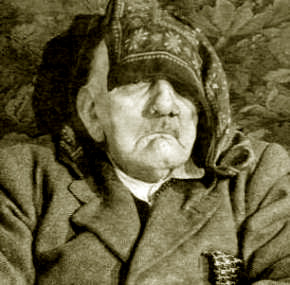
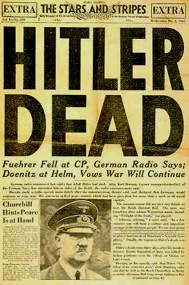
ปฏิบัติการในโครงการพิพิธภัณฑ์ศิลปะนี้และทีมงามที่ได้มาจากทั่วภาคพื้นทวีป เริ่มดำเนินการในช่วงกลางของสงครามหฤโหด ซึ่งถือเป็นรายละเอียดเพิ่มเติมอีกส่วนหนึ่งเกี่ยวกับความวิกลจริตทางด้านศิลปะของฟูเรอร์เยอรมันหรือผู้นำฮิตเลอร์ ซึ่งตัวเขาเองเป็นศิลปินออสเตรียและเป็นนักเรียนศิลปะที่ล้มเหลว. สำหรับรายละเอียดเหล่านี้เป็นเรื่องที่พิเศษไม่เหมือนใคร
นอกจากโครงสร้างพื้นฐานทั้งหมดเกี่ยวกับความเป็นผู้นำทางการเมืองเยอรมัน โดยการส่งทหาร ตำรวจไปประจำการทั่วทั้งยุโรปแล้ว พิพิธภัณฑ์ฟูเรอร์(the Fuhrermuseum) ดังที่ได้รับการเรียกขานยังต้องการองค์ประกอบหรือเครื่องไม้เครื่องมือเกือบทั้งหมดเกี่ยวกับศิลปะเยอรมันเข้ามาเกี่ยวข้องด้วย ทั้งในภาคส่วนธุรกิจและการจัดการพิพิธภัณฑ์ ยกตัวอย่างเช่น นักขายงานศิลปะอย่าง Karl Haberstock ในเบอร์ลิน, Maria Dietrich ในมิวนิค, Hildebrandt Gurlitt ในแฮมเบิร์กและเดสเดน, สถานที่ประมูลงานศิลปะที่เป็นเจ้าของโดย Adolf Weinmueller ในเวียนาและมิวนิค, พี่น้อง Kajetan และ Josef Muehlmann; ผู้อำนวยการแกลเลอรีศิลปะเดสเดน Hans Posse, ผู้อำนวยการ Ernst Buchner ซึ่งดูแลพิพิธภัณฑ์ Bavarian State Museum, ภัณฑารักษ์เกี่ยวกับเสื้อและชุดเกราะ(Armor Curator)จากเวียนนา ณ Kunsthistorisches Institut Leopold Ruprecht; แม้กระทั่ง Walter Andreas Hoefer, ซึ่งเป็นผู้อำนวยการสถาบันสะสมผลงานศิลปะ Goering's art collection. ในช่วงสิ้นสุดสงคราม เมื่อฝ่ายสัมพันธมิตรเข้าไปตั้งฐานปฏิบัติการ ณ ห้องสมุดส่วนตัวของฮิตเลอร์ พวกเขาได้ค้นพบผลงานวาดเส้นเกี่ยวกับรายละเอียดสถาปัตยกรรมนับเป็นร้อยๆ ชิ้น ที่ฮิตเลอร์ตั้งใจจะก่อสร้างขึ้นที่เมืองลินซ์ ออสเตรีย
OSS กับภารกิจการค้นหาผลงานศิลปะที่ได้มาจากการยึดครองของนาซี
สำหรับผลงานศิลปะที่ได้จากการซื้อ: มีการใช้เงินไปเพื่อการนี้นับเป็นสิบๆ ล้านไรค์มาร์ก
ในนามของฟูเรอร์และพิพิธภัณฑ์ดังกล่าวเป็นพิเศษ เนื่องมาจากเป็นผลงานที่ยิ่งใหญ่ที่ถูกซื้อมาเพื่อลินซ์,
ยกตัวอย่างเช่น ผลงานของ Vermeer ในชื่อ "Portrait of the Artist in His
Studio," และผลงานที่ทำขึ้นโดย Breughel, Durer, Fragonard, Rembrandt,
และ Rubens. ช่วงที่กองทัพสหรัฐฯ มาถึงออสเตรียในเดือนพฤษภาคม 1945, ทหารอเมริกันได้ค้นพบงานศิลปะอันล้ำค่านับเป็นพันๆ
ชิ้น ทั้งจิตรกรรม ประติมากรรม เหรียญกษาปณ์ และเสื้อเกราะที่ได้ถูกเก็บสะสมไว้
จำนวนมากของศิลปะวัตถุเหล่านี้ ถูกค้นพบในเหมืองเกลือซึ่งถูกเปลี่ยนแปลงไปเป็นสถานที่เก็บรักษาผลงานเหล่านี้ใน
Alt Aussee.
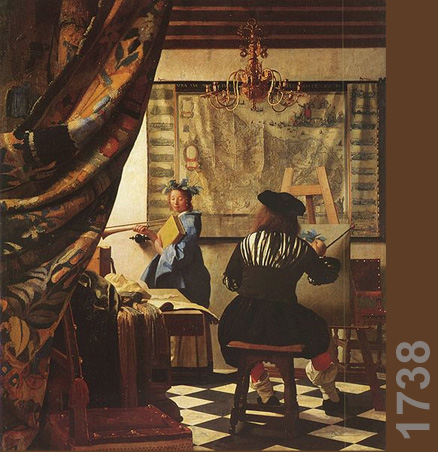
ผลงานของ Vermeer ชื่อภาพ Portrait of the Artist in His Studio
กระทรวงการสงครามของสหรัฐฯ และกองอำนวยการยุทธการได้มีการจัดตั้งหน่วยสืบค้นการปล้นสะดมงานศิลปะขึ้นมาทันที [The U.S. War Department and Office of Strategic Services (OSS)] และเริ่มทำการสัมภาษณ์พวกนาซีที่มีชีวิตรอดจากปฏิบัติการที่เมืองลินซ์โดยละเอียด - และจากรายงานหลังสุดซึ่งเป็นความลับที่หลุดรอดออกมาในปี 1946 จำนวนมากในหมู่คนเหล่านี้ ได้ถูกฟ้องร้องที่นูเร็มเบอร์ก สำหรับอาชญากรรมเกี่ยวกับการขโมยผลงานศิลปะของพวกเขา
เอกสารชิ้นสำคัญที่ยึดมาได้โดยกองทัพแดงโซเวียต
ทุกวันนี้หลังสิ้นสุดสงคราม เรื่องราวโดยสมบูรณ์เกี่ยวกับพิพิธภัณฑ์ลินซ์ (the
Linz Museum)สามารถถูกนำมาเล่าขานได้ ในส่วนเอกสารชิ้นสำคัญที่ยึดมาโดยกองทัพแดงของโซเวียต
ในช่วงที่พวกเขาเคลื่อนผ่านออสเตรียและเยอรมนีในปี 1945 และ 1946 เอกสารทั้งหลายเกี่ยวกับรายละเอียดในการปฏิบัติการของพิพิธภัณฑ์แห่งนี้
ที่ก่อนหน้าคิดกันว่าได้หายสาบสูญไปแล้ว กลับปรากฏอยู่ในรัสเซียและกลุ่มประเทศยุโรปตะวันออก
พร้อมด้วยวัตถุสิ่งของต่างๆ ได้คลี่คลายออกมาเมื่อไม่นานมานี้ - เช่นภาพถ่ายมากกว่า
1 หมื่นภาพ สำหรับสูจิบัตรและอัลบัมเกี่ยวกับพิพิธภัณฑ์แห่งนี้ ปัจจุบันอยู่ที่เดสเดน;
ข้อมูลตำรวจลับเยอรมัน การสัมภาษณ์บรรดาสมาชิกคณะกรรมการชุดพิเศษ ทุกวันนี้เป็นที่เปิดเผยและอยู่ในแฟ้มเอกสารที่เบอร์ลิน;
การสัมภาษณ์บรรดาเจ้าหน้าที่ด้านการทหารเยอรมันโดยหน่วย OSS ซึ่งทำหน้าที่สืบค้นเกี่ยวกับการขโมยภาพผลงานศิลปะ
ถูกเก็บรักษาอยู่ใน the National Archives ใน Washington; ชิ้นงานอื่นๆ ที่เกี่ยวข้องจาก
the German Bundesarchive ใน Koblenz; และเกี่ยวกับหลักฐานแปลกๆ เรื่องราวเบ็ดเตล็ด
และสิ่งที่น่าจดจำของเมืองลินซ์เอง ภาพถ่ายทั้งหมดเกี่ยวกับพิพิธภัณฑ์แห่งนี้
ในท้ายที่สุดได้เผยตัวออกมาอย่างชัดเจน
OSS Art Looting Investigation
Unit
นักประวัติศาสตร์ศิลป์ที่โดดเด่นแห่งบอสตัน James Plaut, ผู้อำนวยการคนก่อนของสถาบันศิลปะสมัยใหม่ในบอสตัน
เคยได้รับการแต่งตั้งให้เป็นหัวหน้าชุดสืบสวนเกี่ยวกับการขโมยผลงานศิลปะของหน่วย
OSS Art Looting Investigation Unit. เขาได้เขียนลงในนิตยสาร The Atlantic ในปี
1946 เกี่ยวกับฮิตเลอร์และพิพิธภัณฑ์แห่งนี้ว่า:
ฮิตเลอร์ได้อุทิศเวลาและพลังงานเป็นจำนวนมากสำหรับการเป็นผู้นำรัฐไปกับการวางแผนสำหรับลินซ์ ตัวอย่างเช่น การสร้างสรรค์ส่วนตัวเกี่ยวกับแผนผังทางด้านสถาปัตยกรรมโดยการกำหนดระเบียบแบบแผนตัวอาคารสาธารณะต่างๆ และสร้างสูตรหรือหลักการสำหรับการเก็บสะสมภาพซึ่งออกจะเป็นความเชี่ยวชาญมากในความรักส่วนในงานประเภทนี้ของเขา ที่ได้มาจากโรงเรียนที่แสนจะจืดชืดไร้ชีวิตชีวาของเยอรมันในช่วงคริสตศตวรรษที่ 19. ห้องสมุดส่วนตัวของเขาซึ่งถูกค้นพบโดยกองทัพอเมริกันในออสเตรีย (และปัจจุบันอยู่ในห้องสมุดรัฐสภาในวอชิงตัน) ได้บรรจุเอางานขีดเขียนเกี่ยวกับสถาปัตยกรรมอย่างสมบูรณ์ของโครงการลินซ์เอาไว้ ซึ่งก็คือพิพิธภัณฑ์ของท่านฟูเรอร์ ที่เป็นตัวอาคารขนาดใหญ่หลังหนึ่งที่เชื่อมต่อกับส่วนอื่นทั้งหมด ประกอบด้วยห้องสมุดขนาดมหึมา(ที่กำหนดให้มีหนังสือในช่วงเริ่มต้น 250,000 เล่ม), มีโรงละคร, และส่วนของการเก็บสะสมชุดเสื้อเกราะต่างๆ. ผลงานจิตรกรรมเยอรมันในช่วงคริสตศตวรรษที่ 19 ได้ถูกรวบรวมเอาไว้ด้วย และมันต้องการพื้นที่ตัวอาคารที่แยกออกไปเพื่อจะเก็บรักษาชิ้นงานสำคัญๆ เอาไว้ เหล่านี้ได้ถูกผสมผสานเข้าด้วยกันอย่างสมบูรณ์แบบด้วยมาสเตอร์แปลน ด้านหน้าของตัวพิพิธภัณฑ์ของท่านฟูเรอร์จะมีแนวเสาระเบียงยาว 500 ฟุต งานออกแบบสถาปัตยกรรมชิ้นนี้คู่ขนานไปกับ Haus fur Deutsche Kunst (House for German art) อันยิ่งใหญ่ซึ่งตั้งตระหง่านอยู่ในเมืองมิวนิค และมันจะยืนหยัดอยู่บนสถานที่ตั้งสถานีรถไฟลินซ์ในเวลานั้น ซึ่งสถานีรถไฟแห่งนี้จะถูกโยกย้ายห่างออกไป 4 กิโลเมตรทางตอนใต้
Roderich Fick, สถาปนิกอย่างเป็นทางการ ได้สร้างงานวาดเส้นทั้งหมดจากแบบแปลนที่กำหนดขึ้นมาส่วนตัวของฮิตเลอร์
โซเวียตกับไล่ล่าผลงานศิลปะยุโรป
โซเวียตได้เข้ามามีส่วนเกี่ยวข้องอย่างลึกซึ้งในข้อสงสัยเกี่ยวกับการขโมยงานศิลปะเหล่านี้
ผู้นำโซเวียตโจเซฟ สตาลิน (Josef Stalin) โดยส่วนตัวแล้วได้เข้ามาดูแลจัดการอย่างใกล้ชิดในการปล้นชิงวัตถุทางศิลปะในเยอรมนี
คณะกรรมการแก้ปัญหากลาโหม (Defense Committee Resolution #9256) ได้ถูกตั้งขึ้นมาอย่างเป็นทางการ
เพื่อที่จะ"ผนวกเข้ามาในส่วนของการเก็บสะสมวัตถุทางศิลปะให้กับพิพิธภัณฑ์แห่งชาติของโซเวียต
(Soviet State Museums)" โดยการทำหน้าที่ไล่ล่าผลงานศิลปะของภาคพื้นทวีปยุโรปในสัดส่วนที่เป็นสิทธิของตน.
คล้ายคลึงกันกับพวกนาซี โซเวียตได้ใช้ผู้เชี่ยวชาญทางศิลปะซึ่งมีความรู้ลึกซึ้งเกี่ยวกับศิลปะวัตถุหรือประดิษฐกรรมทางวัฒนธรรมยุโรป
ยกตัวอย่างเช่น Mikhail Khrapchenko ซึ่งเคยทำหน้าที่อำนวยการส่วนหนึ่งของสถาบันวรรณคดีและศิลปะคอมมิวนิสต์ ได้รับการมอบหมายหน้าที่ให้ดำเนินการเกี่ยวกับคณะกรรมการศิลปะชุดใหม่ของสภาประชาชนคอมมิสซารส์(Commissars). โซเวียตได้ก่อตั้งสำนักงานใหญ่ส่วนหน้าทางศิลปะ ณ เมือง Pilnitz ซึ่งพื้นที่หนึ่งในสี่ของเมืองนี้อยู่ในเดสเดน เยอรมนี, อันเป็นองค์กรซึ่งทำหน้าที่เกี่ยวกับเรื่องศิลปะ และได้สร้างสถานที่คัดแยกศิลปะวัตถุ จิตรกรรม ประติมากรรม และโบราณวัตถุต่างๆ
Igor Grabar, เป็นทั้งจิตรกรและนักประวัติศาสตร์ศิลป์ และเขาเคยดำรงตำแหน่งผู้อำนวยการแกลลอรี Tretiakov, ได้รวบรวมรายการอันยืดยาวเกี่ยวกับผลงานศิลปะที่โซเวียตกำลังค้นหาเป็นการเฉพาะ ยกตัวอย่างเช่น ผลงานระดับปรมาจารย์ศิลปะระดับโลกนับจาก Bosch, Goya, Rubens, Titian, van Dyck, van Gogh. โดยทางการแล้ว รัสเซียอ้างว่าผลงานศิลปกรรมเหล่านี้โดยพื้นฐานเป็นส่วนหนึ่งของค่าชดเชยหรือค่าเยียวยาสงคราม พวกเขากล่าวว่าเรื่องนี้ได้รับความเห็นพ้องให้เป็นเช่นนั้น ณ เมือง Yalta (เมืองทางตอนใต้ของยูเครน)
ช่วงที่ผู้เชี่ยวชาญ ณ เมือง Pilnitz -ปฏิบัติการภายใต้การแนะนำจากกระทรวงศึกษาของส่วนงานบริหารกลาโหมโซเวียตในเยอรมนี - ได้มีการจัดส่งงานของ Raphael ชื่อว่า Sistine Madonna (ดูภาพประกอบ) ไปยังมอสโคว, Khrapchenko นึกฝันว่า "มาถึงตอนนี้ มีความเป็นไปได้ที่จะปรับให้พิพิธภัณฑ์พุชกินของมอสโคว์(Moscow's Pushkin Museum)ไปสู่การเป็นพิพิธภัณฑ์ที่ยิ่งใหญ่ของโลกแห่งหนึ่ง คล้ายคลึงกับ the British Museum, the Louvre, หรือ the Hermitage.(*)"
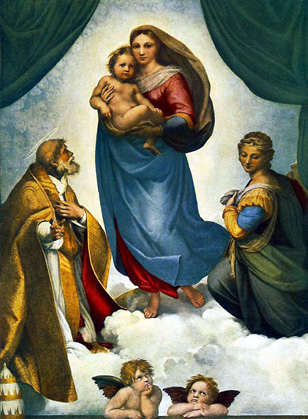
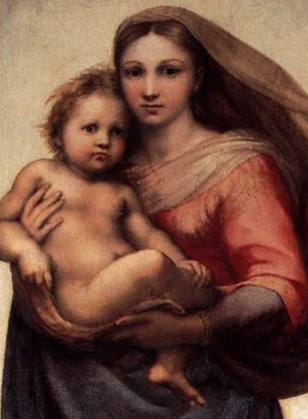
(*)The State Hermitage is a museum of art and culture situated in Saint Petersburg, Russia. One of the largest and oldest museums of the world, it was founded in 1764 by Catherine the Great and open to the public since 1852. Its collections, of which only a small part is on permanent display, comprise nearly 3 million items, including the largest collection of paintings in the world. The collections occupy a large complex of six historic buildings along Palace Embankment, including the Winter Palace, a former residence of Russian emperors. Apart from them, the Menshikov Palace, Museum of Porcelain, Storage Facility at Staraya Derevnya and the eastern wing of the General Staff Building also make part of the museum. The museum has several exhibition centers abroad. The Hermitage is a federal state property. Since 1990, the director of the museum has been Mikhail Piotrovsky.
ทหารของสตาลินได้ขนส่งงานศิลปะกลับไปโดยทางรถไฟ หน่วยสืบราชการลับของโซเวียตและและองค์กรที่เกี่ยวข้อง อย่างเช่น the NKVD (*) (กระทรวงมหาดไทย) และ SMERSH (**) (หน่วยปกป้องกองทัพแดง) ได้รับการนำเข้ามาในไล่ล่าอย่างโหดเหี้ยมเกี่ยวกับเอกสารสำคัญของนาซี ส่วนใหญ่เป็นเรื่องทางการเมือง, การสืบราชการลับ, การป้องกัน, และเพื่อวัตถุประสงค์ทางด้านวิทยาศาสตร์และเทคโนโลยี. ในกระบวนการดังกล่าว ชาวรัสเซียนที่ตั้งถิ่นฐานอยู่ในยุโรปและหวนกลับไปสู่รัสเซียได้นำเอาบันทึกรายงานโดยละเอียดนับพันๆ ชิ้นจาก the Sonderauftraug หรือ "Special Commission" (คณะกรรมการชุดพิเศษ) ของนาซีในการก่อตั้งพิพิธภัณฑ์ลินซ์กลับไปด้วย
(*)The NKVD or People's Commissariat for Internal Affairs was the public and secret police organization of the Soviet Union that directly executed the rule of terror, including political repression, during the Stalinist era.
(**)SMERSH were the counter-intelligence departments in the Soviet Army created in 1943. The name is phonetically similar to the Russian words for tornado and death. The main task of SMERSH was to secure the Red Army's operational rear from partisans, saboteurs, and spies; to investigate and arrest conspirators and mutineers, "traitors, deserters, spies, and criminal elements" at the combat front.
Center for Historical
Documentary Collections "Special Holdings" unit
จำนวนมากของบันทึกเหล่านี้ ได้ถูกเก็บซ่อนจากการทิ้งระเบิดของฝ่ายสัมพันธมิตรในโพรงข้างใต้ปราสาท
Schloss Weesenstein ซึ่งครั้งหนึ่งเคยเป็นปราสาทของกษัตริย์แห่ง Saxony คริสตศตวรรษที่
13, บันทึกดังกล่าวได้รับการนำกลับไปยังมอสโควเพื่อเก็บรักษาไว้ในพิพิธภัณฑ์พุชกิน
และได้รับการโยกย้ายในปี ค.ศ.1976 ไปยังศูนย์กลางการเก็บสะสมเอกสารทางประวัติศาสตร์ในแผนก"การถือครองพิเศษ"
(the Center for Historical Documentary Collections "Special Holdings"
unit.)
จำนวนมากของบันทึกเหล่านี้ รวมไปถึงเอกสารสำคัญเกี่ยวกับพิพิธภัณฑ์ลินซ์ ที่ได้รับการเผยออกมาในชุดเอกสารของรัสเซียน - ประกอบด้วยรายการยืดยาวเกี่ยวกับวัตถุสิ่งของที่ได้รับการสะสมของลินซ์ และรายการการลงทะเบียนผลงานศิลปกรรมต่างๆ กิจกรรมทางธุรกิจและงานที่เกี่ยวข้องกับสำนักงานของอาณาจักรไรค์ที่สาม (the Third Reich) ในการได้มาเกี่ยวกับงานศิลปกรรมเหล่านี้เพื่อกิจการพิพิธภัณฑ์ คำอธิบายของผู้เชี่ยวชาญและการประเมินคุณค่า; บันทึกความจำในการบริหารงานหลากหลายชนิด ใบแจ้งราคาสินค้า ใบเสร็จรับเงิน จนกระทั่งถึงรายละเอียดของรายงานการอพยพสิ่งของต่างๆ ที่ถูกเขียนขึ้นมาอย่างรีบเร่ง และรายงานพวกนี้เป็นเรื่องที่เร้าใจมาก ดังที่ Plaut ได้เขียนขึ้นมากว่า 60 ปีแล้วดังนี้:
อาการฮีสทีเรียในสถานที่ทำการของอาณาจักรไรค์ หรือที่เรียกว่า the Reich Chancellery (*) ได้พุ่งขึ้นสู่จุดสูงสุดในช่วงปลายของปี 1943 ซึ่งฮิตเลอร์มีคำสั่งให้อพยพศิลปะวัตถุ สิ่งของทั้งหมดทั้งในเยอรมนีและออสเตรียเพื่อที่จะรักษามันไว้ให้ปลอดภัย. ในเดือนกุมภาพันธ์ 1944 ด้วยการปกคลุมของหิมะทั่วประเทศ ขบวนคอนวอยรถบรรทุกที่บรรจุไว้ด้วยสินค้าอันล้ำค่าได้เริ่มเคลื่อนย้ายไปทางใต้ โดยมุ่งไปสู่ลินซ์. อย่างไรก็ตาม ทางตะวันออกของเมือง Salzburg, พวกเขาเกิดเลิกล้มความคิดและเริ่มป่ายปีนด้วยความพยายามขึ้นไปสู่เขตภูเขาของพื้นที่สูงของเมืองดานูป (Danube). จุดหมายปลายทางของพวกเขาคือ "เหมืองเกลือในคริสตศตวรรษที่ 14" ที่อยู่สูงเหนือหมู่บ้านอันงดงามแห่ง Alt Aussee.
(*)The Reich Chancellery (German: Reichskanzlei) was the traditional name of the office of the German Chancellor (Reichskanzler). Today the office is usually called Kanzleramt (Chancellor's Office), or more formally Bundeskanzleramt (Federal Chancellor's Office). The term Reichskanzlei also refers to various buildings that housed the upper echelons of Germany's government.
ความพยายามครั้งสุดท้าย
ด้วยรถถังและวัวต่างที่ DORA
ด้วยภาระผูกพันเล็กๆน้อยๆ เกี่ยวกับสงคราม และด้วยความพยายามที่ได้ผลหรือล้มเหลวก็ตาม
เส้นทางสู่ Aussee ต้องป่ายปีนสูงขึ้นไปเหนือเส้นทางชันสองสาย ที่ดูเหมือนว่าไม่อาจถูกโจมตีได้ท่ามกลางความตายของฤดูหนาว
ด้วยการกำหนดขึ้นมาอย่างลนลานเพื่อซ่อนเร้นสิ่งที่ปล้นชิงมาในฐานที่มั่นสุดท้าย
รถถังและวัวต่าง ได้ถูกนำมาใช้ในที่ๆ รถบรรทุกไม่สามารถที่จะไต่สูงขึ้นไปได้บนทางลื่น.
เขาสิบสามลูก ตลอดทั้งฤดูหนาวถึงฤดูร้อนของปี 1944 และจนกระทั่งฤดูหนาวปี 1945
ขบวนคอนวอยรถบรรทุกได้โขยกเขยกพาตัวของมันเองสูงขึ้นไปบนภูเขา และนำเอาสินค้าอันทรงคุณค่าขนส่งไปลงที่ปากทางของเหมืองแห่งนี้
เหมือง Steinberg ค่อนข้างคดเคี้ยวเหมือนเขาวงกตด้วยช่องทางเชื่อมต่อ อุโมงค์ขนาดเล็กดูจะสูงเพียงแค่หกฟุต ซึ่งคนที่มีรูปร่างสูงใหญ่จะรู้สึกอึดอัดกับขนาดสัดส่วนนี้ มันเป็นช่องทางขุดเข้าไปในภูเขาตามแนวราบยาวประมาณสองกิโลเมตร และมีลมพัดอยู่รอบๆ มีเส้นทางเชื่อมถึงกันของคูหาขนาดใหญ่(ขนาดเท่าช้างแมมมอธ) จากที่ซึ่งมีการขุดเกลือมาเป็นเวลานับศตวรรษ เครื่องยนต์แก๊สโซลีนขนาดเล็กเท่านั้นที่สามารถผ่านเข้าไปในอุโมงค์ได้บนเส้นทางรางเก่าแคบๆ ที่เคลื่อนตัวช้าๆ แบบหอยทาก ซึ่งถูกชักรากด้วยรถเตี้ยๆ และไม่มีหนทางอื่นที่จะเข้าไปสู่ภายในเหมือง
สำหรับ "Dora" (ชื่อระหัสของสถานที่ซ่อนซึ่งเป็นความลับ) คนงานได้แปรเปลี่ยนอุโมงค์ใต้ดินพิศดารเหล่านี้ไปสู่การเป็นห้องเก็บรักษาผลงานศิลปะ ศิลปวัตถุ และสิ่งของต่างๆ ที่วางอยู่บนพื้นไม้สะอาดและชั้นวางของที่ถูกสร้างขึ้นมาเป็นพิเศษ เครื่องกำจัดความชื้น และแสงไฟที่ติดตั้งแบบสมัยใหม่. แน่นอน Dora คือคูหาสำหรับตั้งแสดงงานศิลปะแห่งสุดท้ายของนาซี ณ ที่นี้ตามนัยะที่แท้แล้วได้สะท้อนว่า "ฮิตเลอร์วางแผนลงใต้ดิน"
ในปี ค.ศ.1944 - 1945 "โดรา"(Dora)ได้รับผลงานจิตรกรรมฝีมือปรมาจารย์อาวุโสถึง 6,755 ชิ้น โดยในจำนวน 5,350 ได้ถูกกำหนดให้ไปติดตั้งที่ลินซ์, 230 ชิ้นเป็นผลงานวาดเส้น, งานภาพพิมพ์ 1,039 ชิ้น, ผ้าม่านขนาดใหญ่จำนวน 95 ผืน, งานประติมากรรม 68 ชิ้น, งานตกแต่งและศิลปะประยุกต์ 43 รัง (objects d'art), และเฟอร์นิเจอร์ต่างๆ อีกจำนวนนับไม่ถ้วน นอกจากนี้ยังมีหนังสืออีกจำนวน 119 หีบนำมาจากห้องสมุดฮิตเลอร์ในเบอร์ลิน และหนังสือ 237 รังสำหรับห้องสมุดในพิพิธภัณฑ์ลินซ์ ขบวนรถบรรทุกชุดสุดท้ายได้มาถึงเหมืองเกลือยังไม่ถึงเดือนก่อนวันประกาศชัยชนะของฝ่ายสัมพันธมิตร หรือ V-E Day (Victory in Europe Day, 8 พฤษภาคม 1945) (*)
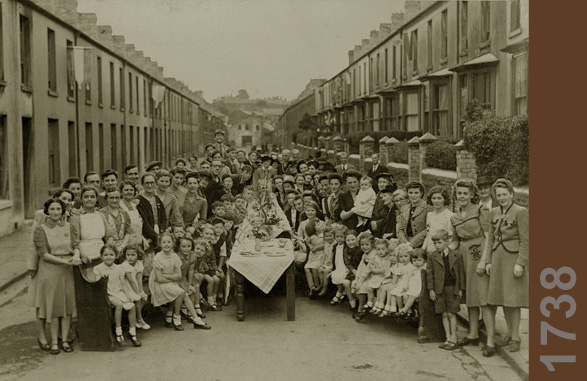
(*)Victory in Europe Day (V-E Day or VE Day) was on 8 May 1945, the date when the World War II Allies formally accepted the unconditional surrender of the armed forces of Nazi Germany and the end of Adolf Hitler's Third Reich. On 30 April Hitler committed suicide during the Battle of Berlin, and so the surrender of Germany was authorized by his replacement, President of Germany Karl Donitz. The administration headed up by Donitz was known as the Flensburg government. The act of military surrender was signed on May 7 in Reims, France, and May 8 in Berlin, Germany.
เหล่านี้ได้ถูกให้รายละเอียดผ่านช่องทางการสื่อสารของโลกทุกวันนี้ ไม่ว่าจะเป็นโทรทัศน์
วิทยุ และเว็บไซต์ออนไลน์เกี่ยวกับประวัติพิพิธภัณฑ์ลินซ์ของฮิตเลอร์ ซึ่งได้มีการนำเสนอเป็นบันทึกหมายเหตุในสูจิบัตร
เกี่ยวกับการแสวงหางานศิลปะและผลงานศิลปะที่ยึดมาได้สำหรับพิพิธภัณฑ์ลินซ์ พร้อมด้วยพิมพ์เขียวของพิพิธภัณฑ์แห่งนี้
ตลอดรวมถึงเรื่องการบริหารและการจัดการด้านการเงินอย่างสมบูรณ์. ข้อมูลทั้งหลายถูกนำมาเชื่อมโยงกัน
ไม่ว่าจะเป็นบันทึกต่างๆ งานวาดเส้น ภาพถ่าย และการสัมภาษณ์ ทำให้โลกที่ฮิตเลอร์จินตนาการสำหรับลินซ์ได้ถูกสร้างขึ้นมาและได้เผยตัวสู่สาธารณชนด้วยความสนใจเกี่ยวกับประวัติศาสตร์สงครามโลกครั้งที่สอง
ในแง่มุมเกี่ยวกับศิลปะ, เยอรมนี, และรัสเซีย
เอกสาร หนังสือ นิทรรศการ และงานสร้างสรรค์ดิจิตอลเกี่ยวกับพิพิธภัณฑ์อันล้มเหลวนี้ (โดยความช่วยเหลือของเทคโนโลยีเสมือนจริง ยกตัวอย่างเช่นเว็บไซต์ http://www.cvrlab.org/) ได้ทำให้ผู้คนได้เห็นถึงความแปลกพิศดาร ความชั่วร้าย และวิสัยทัศน์ทางศิลปะที่ออกจะวิตถารขึ้นมาเป็นครั้งแรก จากด้านหนึ่งของความโหดร้ายอย่างถึงที่สุด ของบุคคลที่มีพลังอำนาจมากที่สุดในประวัติศาสตร์โลก
หมายเหตุ:
The executive planning committee of this Linz Museum
media project includes Nina Bouis, author, translator, and former Executive
Director of the Soros Foundation in Russia; Nicolas V. Iljine, European Representative
of the Solomon R. Guggenheim Foundation; and Jonathan Sanders, veteran CBS
news correspondent, Director of the Project on the Russian Future, Ferris
Professor of Journalism at Princeton University, and former Assistant Director
of the W. Averell Harriman Institute for Advanced Study of the Soviet Union.
สำหรับผู้สนใจต้นฉบับคลิก http://www.intelligenttelevision.com/productions/project/hitlers-museum/
+++++++++++++++++++++++++++++++++++++++++++++
Hitler's Museum
The Linz Museum-conceived of by Adolf Hitler, designed by architect Albert Speer, financed and administered by Martin Bormann, envied (at times even sabotaged) by Hermann Goering, stocked by Alfred Rosenberg, Hans Posse, Hermann Voss and the Sonderauftraug, or "Special Commission," of more than 20 of Hitler's leading art specialists (curators of paintings, prints, armor, and coins, restorers, photographers, librarians, architects, and engineers)-was among the strangest of Hitler's criminal ambitions, envisioned to become the Nazis' Smithsonian Institution: a Louvre for the 1,000-Year Reich. A colossal art museum created to house the world's greatest Aryan cultural achievements, this campus of buildings in Linz was planned to hold works by all of the great masters of Europe that the Nazis bought and seized during the occupation of Europe.
Under Hitler's direct command, Special Commission agents stationed in France, Holland, Belgium, Italy, Czechoslovakia, and Poland systematically acquired more than 10,000 art objects, objects that, in turn, were shipped on to Germany and Austria for wartime storage in castles and deep underground mines that had been converted for the purpose. Such was Hitler's attachment to the project that when he committed suicide in Berlin in April 1945, the scale model of the museum was there, underground in the bunker, next to him.
Launching a museum project with a continent-wide acquisitions staff in the middle of a brutal world war is further detail about the operatic insanity of the German Fuhrer, himself an Austrian artist and failed art student. And the detail is extraordinary. Quite apart from the entire infrastructure of the German political leadership, military, and police deployed across Europe, the Fuhrermuseum, as it was called, requisitioned the services of almost the entire apparatus of German art dealing and curation-dealers like Karl Haberstock in Berlin, Maria Dietrich in Munich, Hildebrandt Gurlitt in Hamburg and Dresden, auction house owner Adolf Weinmueller in Vienna and Munich, the brothers Kajetan and Josef Muehlmann; Dresden Gallery Director Hans Posse, Bavarian State Museum Director Ernst Buchner, Armor Curator from the Vienna Kunsthistorisches Institut Leopold Ruprecht; even Walter Andreas Hoefer, director of Goering's art collection. At the end of the war, when the Allies located Hitler's private library, they discovered hundreds of detailed architectural drawings of the buildings that Hitler had intended to build in Linz.
The art bought and seized-bought for tens of millions of Reichmarks-in the name of the Fuhrer and this Museum was also extraordinary, from perhaps the greatest work bought for Linz, Vermeer's "Portrait of the Artist in His Studio," to works by Breughel, Durer, Fragonard, Rembrandt, and Rubens. When the U.S. Army arrived in Austria in May 1945, American soldiers found thousands of the precious paintings, sculptures, coins, and armor that had been collected, many in a deep salt mine converted for the purpose in Alt Aussee. The U.S. War Department and Office of Strategic Services (OSS) swiftly established a special Art Looting Investigation Unit and began to conduct detailed interviews with the surviving Nazi figures from the Linz operation-recommending, in a final confidential report issued in 1946, that many of them be prosecuted at Nuremburg for their crimes.
Today, at long last, the full story of the Linz Museum can be told. Key documents seized by the Soviet Red Army in its sweep through Austria and Germany in 1945 and 1946-documents about the Museum's operational details previously thought to have disappeared-have been located in Russia and the former East bloc. Together with other materials that only recently have come to light-photos, over 10,000 of them, for the catalogs and albums of the Museum, now located in Dresden; German secret police interviews with members of the Special Commission, now open and on file in Berlin; interviews with German military officials by the OSS Art Looting Investigation Unit, in the National Archives in Washington; supplementary material from the German Bundesarchive in Koblenz; and the odd bits of evidence, miscellany, and memorabilia from the city of Linz itself-the total picture of this Museum at last is becoming clear.
Distinguished Boston art historian James Plaut, former director of the Institute of Modern Art in Boston, was appointed head of the OSS Art Looting Investigation Unit. He wrote in The Atlantic in 1946 about Hitler and the Museum:
Hitler devoted a disproportionate amount of time and energy, for a chief of state, to the plans for Linz, personally creating the architectural scheme for an imposing array of public buildings, and setting the formula for an art collection which was to specialize heavily in his beloved, mawkish German school of the nineteenth century. His private library, discovered by the American Army deep in Austria [and now in the Library of Congress in Washington], contained scores of completed architectural renderings for the Linz project, of which the F?hrer-museum was to be a single edifice related to the whole, comprising a great library (with an initial quota of 250,000 volumes), a theater, and a separate collection of armor. German painting of the nineteenth century was to be assembled in such quantity that, should the need arise for a separate building to house the monumental collection, it could be integrated successfully with the master plan . The F?hrer-museum, with a colonnaded fa?ade about 500 feet long, the design paralleling that of the great Haus f?r Deutsche Kunst already erected in Munich, would stand on the site of the present Linz railroad station, which was to be moved four kilometers to the south. Roderich Fick, the official architect, made his drawings entirely from Hitler's personal prescriptions.
The Soviets were deeply involved in these art-theft questions. Soviet leader Josef Stalin personally supervised much of the Soviet effort at plundering art objects in Germany. His Defense Committee Resolution #9256, designed officially to "supplement the collections of Soviet State Museums," launched a Soviet continent-wide art hunt operatic in scale in its own right. Like the Nazis, the Soviets employed art experts with profound knowledge of European cultural artifacts. Mikhail Khrapchenko, who had directed part of the Communist Institute of Literature and Art, was charged with running the new Art Committee of the Council of Peoples' Commissars. The Soviets established a forward art front headquarters at Pilnitz, an estate in Dresden where the men charged with carrying out Resolution #9256 found an idyllic spot from which to sort through canvases, sculptures, and antiques. Igor Grabar, painter, art historian, and the former Director of the Tretiakov Gallery, compiled a long list of artwork the Soviets specifically were to look for-world-class art masterpieces from Bosch, Goya, Rubens, Titian, van Dyck, van Gogh. Officially, the Russians grounded their claims to this art in reparations-agreed upon, they said, at Yalta. When the men at Pilnitz-operating under the guise of the Education Department of the Soviet Military Administration in Germany-shipped Raphael's Sistine Madonna to Moscow, Khrapchenko fantasized that "it would now be possible to turn Moscow's Pushkin Museum into one of the world's great museums, like the British Museum, the Louvre, or the Hermitage."
Stalin's soldiers shipped back trainloads more art. Soviet intelligence and counter-intelligence organizations like the NKVD and SMERSH had been engaged in a fierce hunt for Nazi archives, mainly for political, intelligence, counter-intelligence, and scientific-technological purposes, with a focus on scientific and technological information. But in the process, the Russians located and returned to Russia with thousands of detailed records from the Sonderauftraug. Many of these records, hidden from Allied bombers in the warrens beneath Schloss Weesenstein, a 13th-century castle once home to the King of Saxony, were carted back to Moscow for the Pushkin Museum, and were transferred in 1976 to the Center for Historical Documentary Collections "Special Holdings" unit. Much of this material, including the Linz archives, has come to light in the Russian archives-the Linz collection features extensive lists and registers of art works, business and work correspondence with various offices of the Third Reich on acquiring these works of art for the Museum, expert accounts and appraisals; administrative memos of various kinds; invoices; receipts; and, toward the end, detailed if hastily written evacuation reports. And these evacuations had been dramatic. As Plaut had written 60 years ago:
Hysteria in the Reich Chancellery had become so intense by the end of 1943 that Hitler ordered a wholesale evacuation of the [many] repositories [in Germany and Austria] in favor of a still safer refuge. In February, 1944, with the snow blanketing the country, truck convoys began to move south with their precious cargo, in the direction of Linz itself. Just east of Salzburg, however, they turned off and began to climb laboriously into the mountainous region of the Upper Danube. Their destination was a fourteenth-century salt mine, high above the picturesque village of Alt Aussee.
Few undertakings of the war were more painstaking or futile. The road to Aussee climbs over two high passes, virtually unassailable in the dead of winter. With frantic determination to conceal the loot in the very earth of the last redoubt, tanks and even oxen were used where trucks failed to scale the slippery barrier. For thirteen months, through the winter and summer of 1944 and into the winter of 1945, the convoys limped over the mountains and left their cargo at the entrance to the mine.
The Steinberg mine is a labyrinth with a single outlet. A tunnel little more than six feet in height-so that a tall man negotiates it with difficulty-cuts two kilometers horizontally into the mountainside and, winding around, links a series of mammoth caverns, from which salt has been mined through the centuries. A miniature gasoline engine can proceed through the tunnel on narrow-gauge rails at snail's pace, hauling a tiny flat car. There is no other access to the mine's interior.
For "Dora" (the code name of the secret deposit) workmen transformed these grotesque subterranean vaults into model storage rooms, fitted with clean wooden floors and specially constructed racks, dehumidification equipment, and modern lighting fixtures. Dora was surely the most fantastic manifestation of the last-ditch Nazi stand. Here, Hitler planned literally to go underground.
In 1944 and 1945, "Dora" received 6,755 old master paintings, of which 5,350 were destined for Linz, 230 drawings, 1,039 prints, 95 tapestries, 68 sculptures, 43 cases of objects d'art, and innumerable pieces of furniture; in addition, 119 cases of books from Hitler's library in Berlin, and 237 cases of books for the Linz library. The last convoy arrived at the mine less than a month before V-E Day.
These detailed, annotated catalog records of the art sought and seized for the Museum, along with the Museum's blueprints and full financial and administrative records, form the basis of this extraordinary new television, radio, and online history of Hitler's Linz Museum. Taken together, these records, drawings, photographs, and interviews, allow the world that Hitler had imagined for Linz to be shown to the public interested in the history of World War II, art, Germany, and Russia.
The documentary, book, exhibit, and the digital creation of this failed museum (enlisting virtual reality technologies such as those at http://www.cvrlab.org/) will allow people to see for the first time this strange, evil, and bizarrely artistic vision from one of the cruelest, most powerful men in the history of the world.
The executive planning committee of this Linz Museum media project includes Nina Bouis, author, translator, and former Executive Director of the Soros Foundation in Russia; Nicolas V. Iljine, European Representative of the Solomon R. Guggenheim Foundation; and Jonathan Sanders, veteran CBS news correspondent, Director of the Project on the Russian Future, Ferris Professor of Journalism at Princeton University, and former Assistant Director of the W. Averell Harriman Institute for Advanced Study of the Soviet Union.
http://www.intelligenttelevision.com/productions/project/hitlers-museum/
+++++++++++++++++++++++++++++++++++++++++++++
บทความวิชาการนี้ สามารถ download ได้ในรูป word
++++++++++++++++++++++++++++++++++++
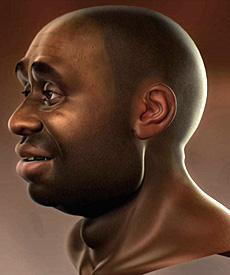
ไปหน้าแรกของมหาวิทยาลัยเที่ยงคืน
I สมัครสมาชิก I สารบัญเนื้อหา 1I สารบัญเนื้อหา 2 I
สารบัญเนื้อหา 3 I สารบัญเนื้อหา
4
I สารบัญเนื้อหา
5 I สารบัญเนื้อหา
6
สารบัญเนื้อหา
7 I สารบัญเนื้อหา
8
ประวัติ
ม.เที่ยงคืน
สารานุกรมลัทธิหลังสมัยใหม่และความรู้เกี่ยวเนื่อง
e-mail
: midnightuniv(at)gmail.com
หากประสบปัญหาการส่ง
e-mail ถึงมหาวิทยาลัยเที่ยงคืนจากเดิม
[email protected]
ให้ส่งไปที่ใหม่คือ
midnight2545(at)yahoo.com
มหาวิทยาลัยเที่ยงคืนจะได้รับจดหมายเหมือนเดิม
มหาวิทยาลัยเที่ยงคืนกำลังจัดทำบทความที่เผยแพร่บนเว็บไซต์ทั้งหมด
กว่า 1700 เรื่อง หนากว่า 35000 หน้า
ในรูปของ CD-ROM เพื่อบริการให้กับสมาชิกและผู้สนใจทุกท่านในราคา 150 บาท(รวมค่าส่ง)
(เริ่มปรับราคาตั้งแต่วันที่ 1 กันยายน 2548)
เพื่อสะดวกสำหรับสมาชิกในการค้นคว้า
สนใจสั่งซื้อได้ที่ midnightuniv(at)gmail.com หรือ
midnight2545(at)yahoo.com
สมเกียรติ
ตั้งนโม และคณาจารย์มหาวิทยาลัยเที่ยงคืน
(บรรณาธิการเว็บไซค์ มหาวิทยาลัยเที่ยงคืน)
หากสมาชิก ผู้สนใจ และองค์กรใด ประสงค์จะสนับสนุนการเผยแพร่ความรู้เพื่อเป็นวิทยาทานแก่ชุมชน
และสังคมไทยสามารถให้การสนับสนุนได้ที่บัญชีเงินฝากออมทรัพย์ ในนาม สมเกียรติ
ตั้งนโม
หมายเลขบัญชี xxx-x-xxxxx-x ธนาคารกรุงไทยฯ สำนักงานถนนสุเทพ อ.เมือง จ.เชียงใหม่
หรือติดต่อมาที่ midnightuniv(at)yahoo.com หรือ midnight2545(at)yahoo.com